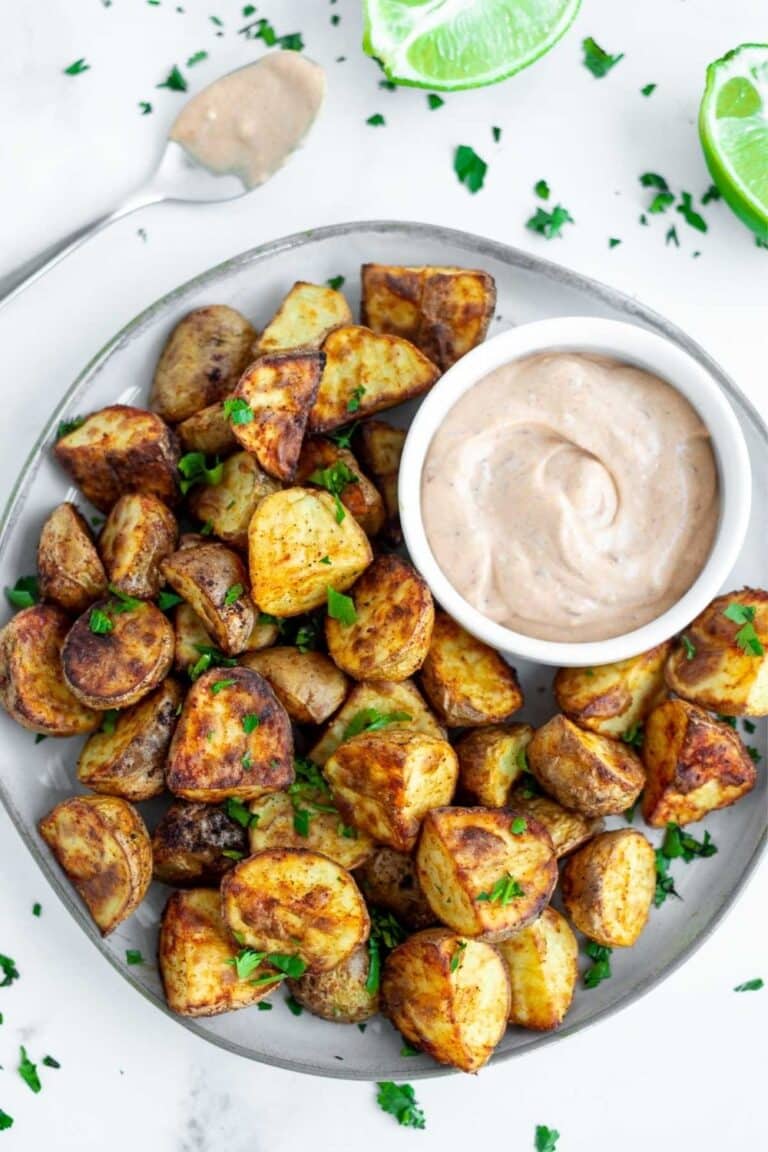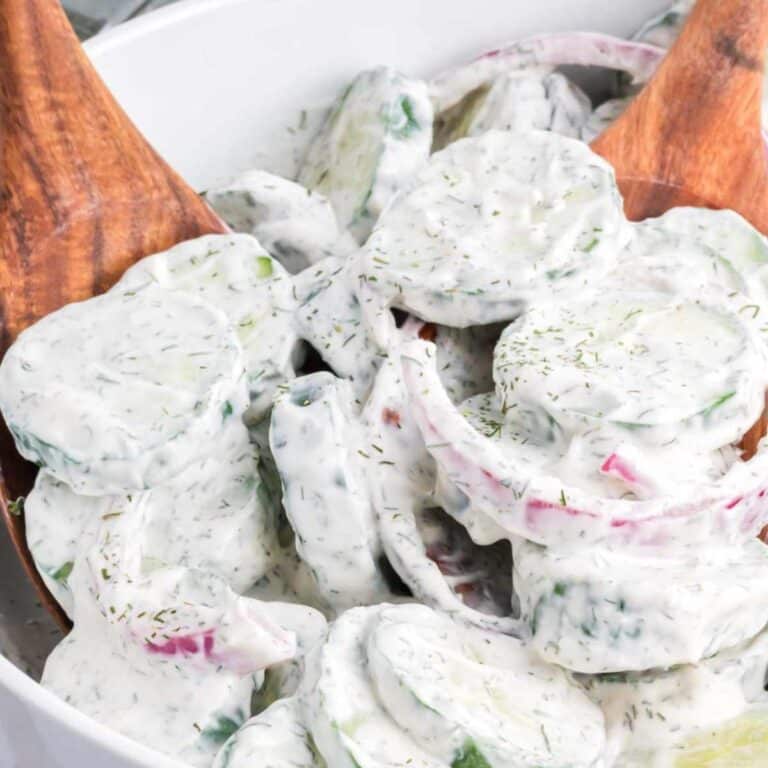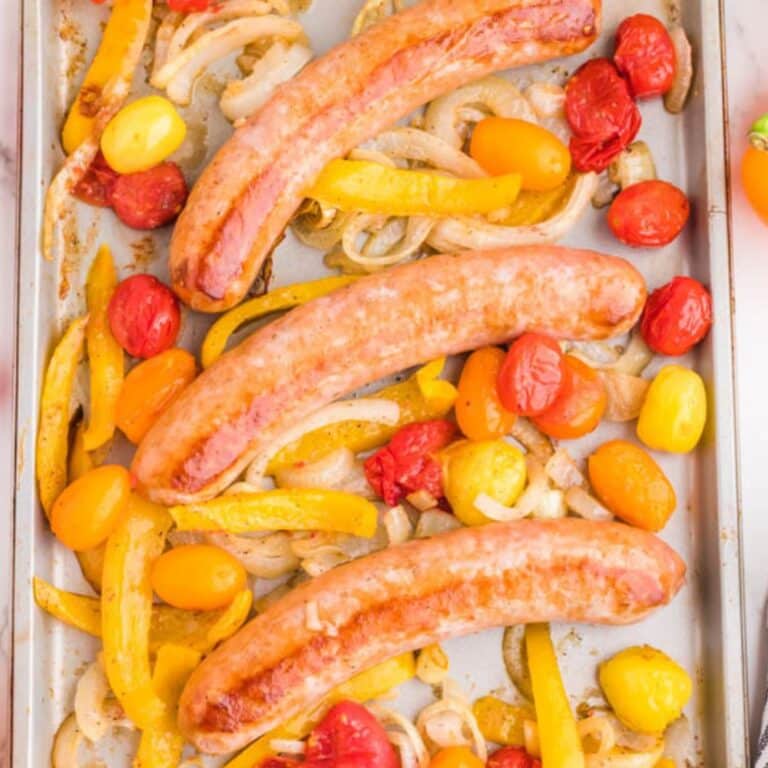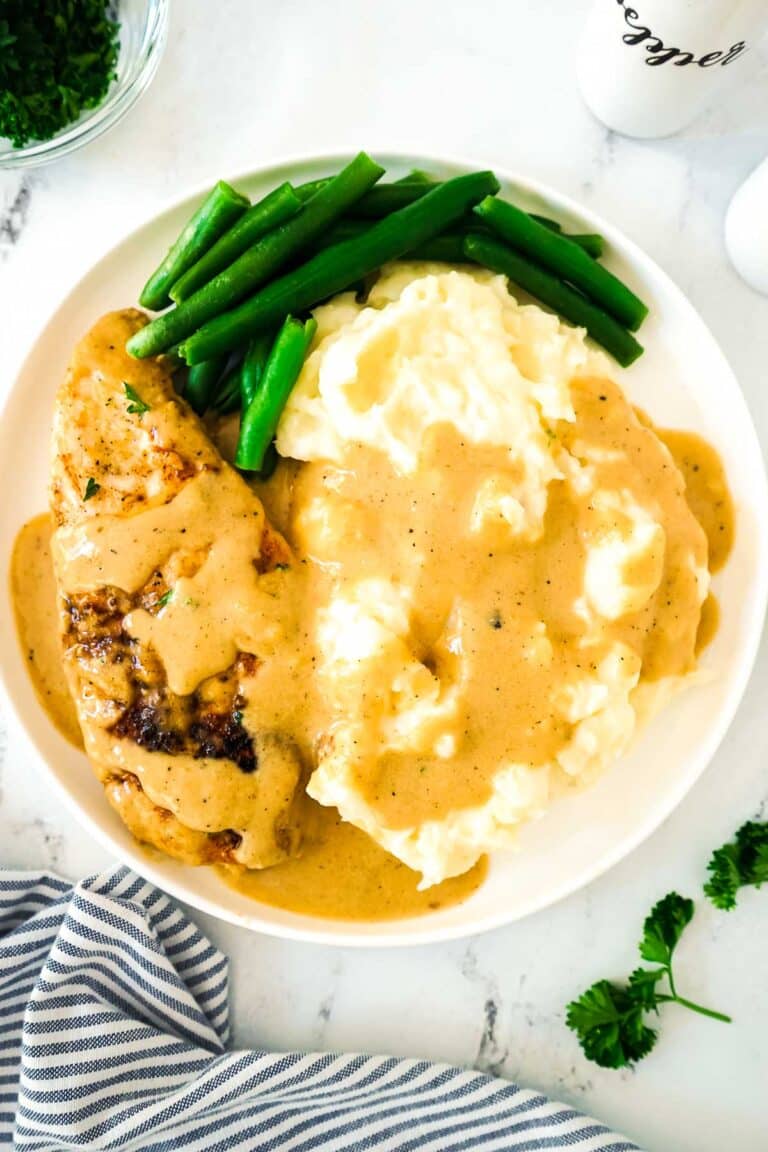15 Great Substitutes for Turmeric
Looking for substitutes for turmeric? Maybe you don’t have any on hand and need a quick replacement that has a similar taste, texture or color? No matter what you are using it for, here you’ll find 15 great replacements for turmeric!
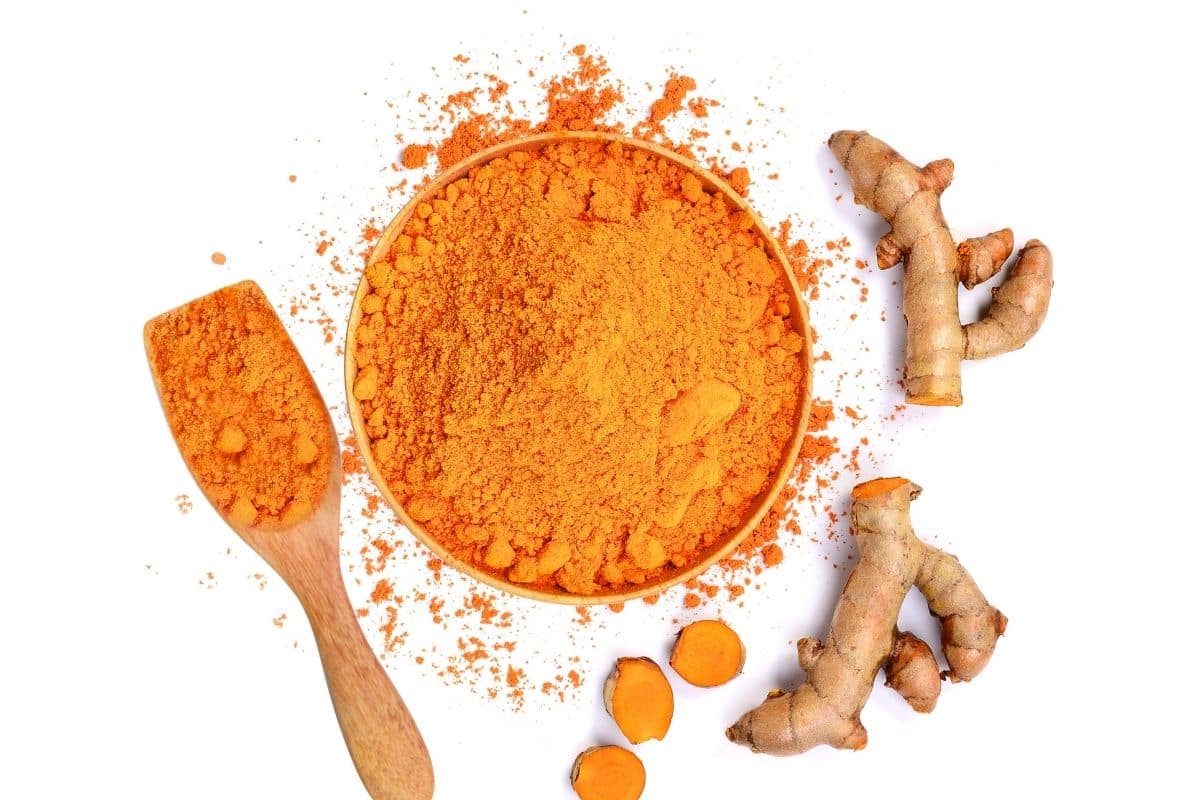
HOW TURMERIC IS MOST COMMONLY USED
If any spice is having “a moment,” I’d have to say it’s turmeric! The Indian-based spice has become wildly popular over the past few years for it’s health benefits and “super food” qualities. Although research results have been mixed about turmeric fighting illnesses from cancer to depression to headaches, one thing is for certain, turmeric is a very versatile spice in cooking!
Here are the most popular ways turmeric is used in cooking:
- Soups/stews/curries
- To add flavor and color to roasted veggies and rice
- Smoothies/Juices
- Tea: “Golden Milk”
- Pickling
15 GREAT SUBSTITUTES FOR TURMERIC
1. Saffron
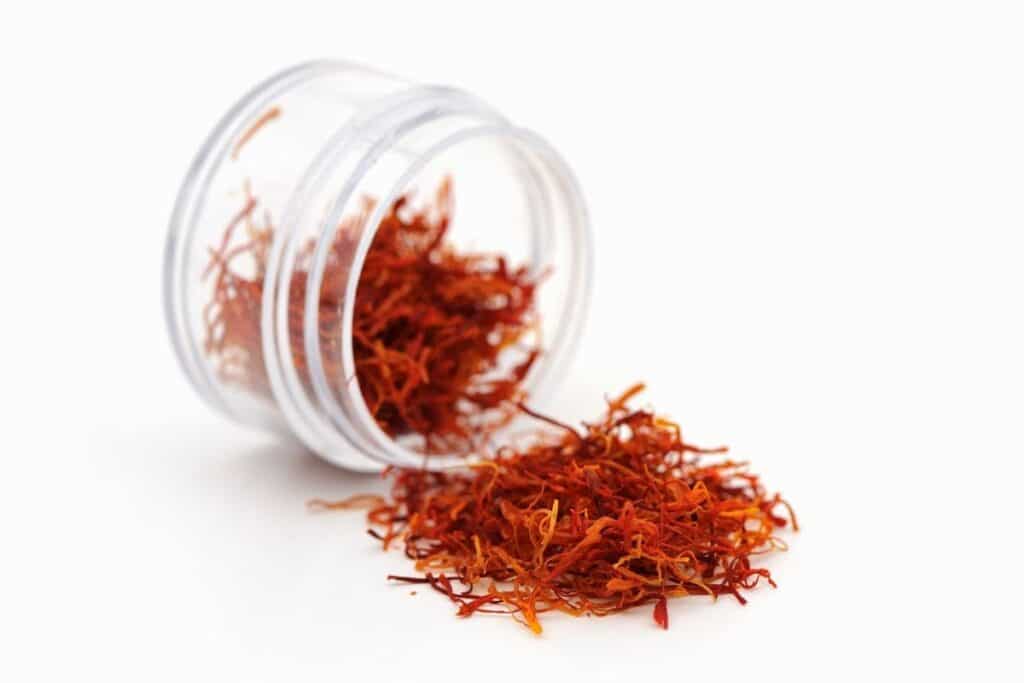
Saffron is one of the best substitutes for turmeric as it has a mild flavor and beautiful, rich color similar to turmeric. Although saffron threads are on the pricey side, they are super easy to find in most major chain grocery stores.
1 tsp of turmeric = 1-2 large pinches of saffron threads
2. Safflower
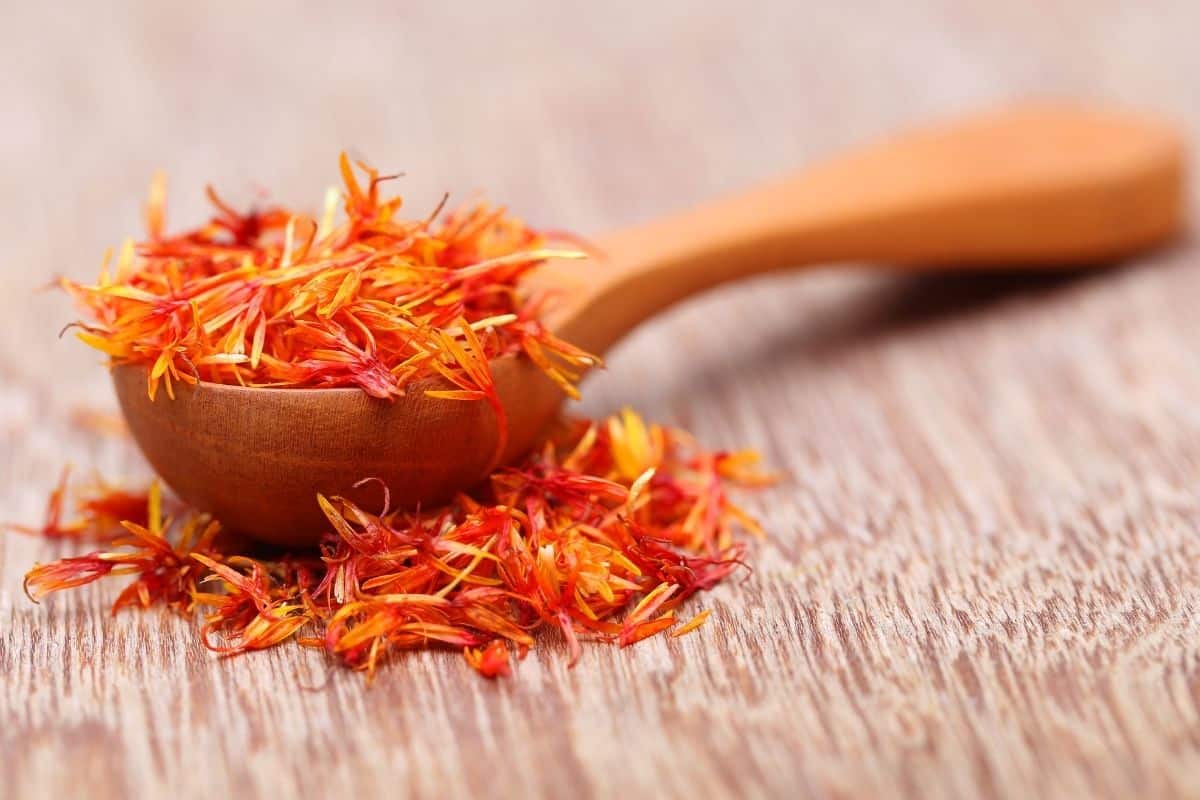
Safflower looks VERY similar to saffron but produces a rich, vibrant yellow color that is more similar to the color of turmeric. Safflower has a more mild flavor than saffron, making it a great replacement for turmeric in dishes to add color. Since the flavor is mild, you will need a bit more safflower to replace the same amount of turmeric.
1 tsp turmeric = 2 large pinches of safflower
3. Ground Ginger/Ginger Powder
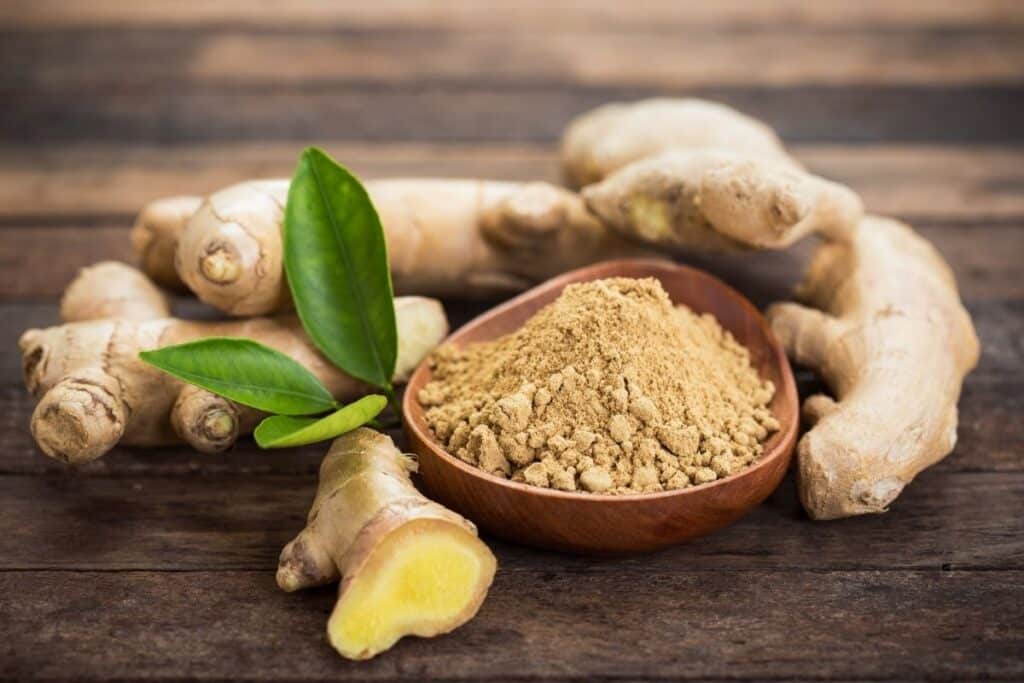
Ginger is actually a COUSIN of turmeric. In fact, the two in root form look very similar! Ginger is just slightly more yellow on the inside, while turmeric is bright orange inside. Ginger does have a more distinct flavor than turmeric, however it packs that same antioxidant and “medicinal” benefits as turmeric. These benefits make it a good replacement in healthy drinks vs. to flavor or color food.
1 tsp turmeric = 1/2 tsp (or less) ground ginger powder
4. Dry Mustard
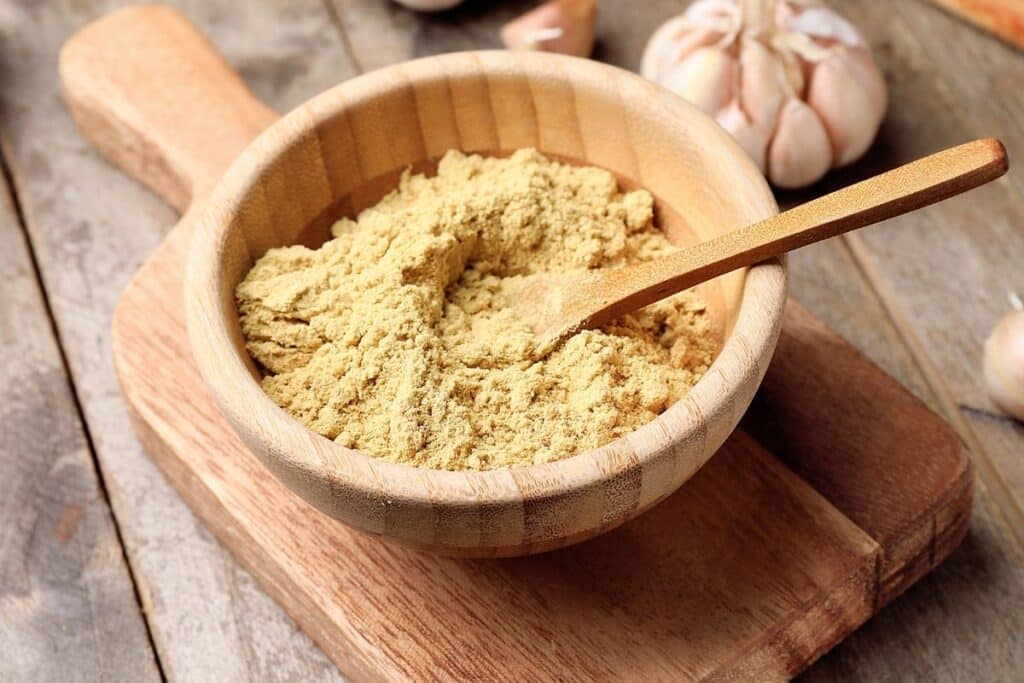
Mustard powder is fairly mild and can be used to color and flavor some dishes. It also has some of the same anti-inflammatory properties of turmeric. Mustard does have quite a different taste than turmeric, so you just have to be very careful about the amount you use. Start with a little, taste, and go from there 🙂
1 tsp turmeric = 1/2 tsp (or less) of mustard powder
5. Mustard Seeds

The taste of mustard SEED (vs. ground powder) is stronger and more potent. Because they are in seed form, they don’t provide the rich color of mustard powder. Mustard seeds are a good replacement for turmeric in pickling.
1 tsp turmeric = 1/2 tsp mustard seed (to taste, start with a small amount)
6. Curry Powder
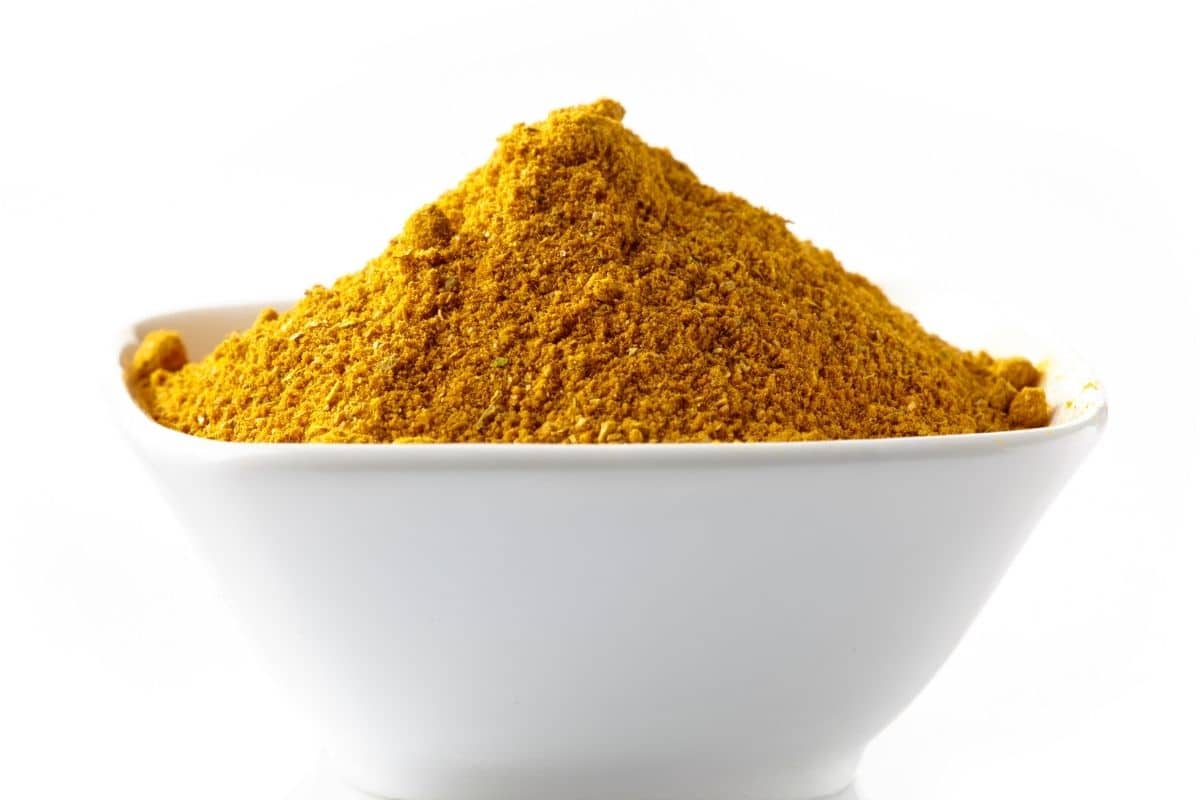
Curry powder can vary so widely in taste depending on the brand. However, one thing that remains the same is the presence of turmeric! However, curry powders also include a blend of many more spices including coriander, cumin, ginger, pepper, etc. So when replacing curry powder for turmeric, use sparingly until you can taste the dish and make sure the taste is to your liking.
1 tsp turmeric = 1/2 tsp (or less!) curry powder
7. Turmeric Paste

Turmeric Paste is typically a blend of turmeric powder, oil, and other spices such as black pepper and cumin. When you use turmeric paste IN dishes, the flavor and color is nearly the same as dried turmeric. The paste blends nicely into many dishes and adds a slightly more flavor, due to the extra spices.
Turmeric paste is the preferred substitute in teas and “Golden Milk” because it “melts” into the liquid so easily. It’s not easy to find at major chain grocery stores, but of course you can get it on Amazon!
1 tsp turmeric = 2 tsp turmeric paste
8. Garam Masala
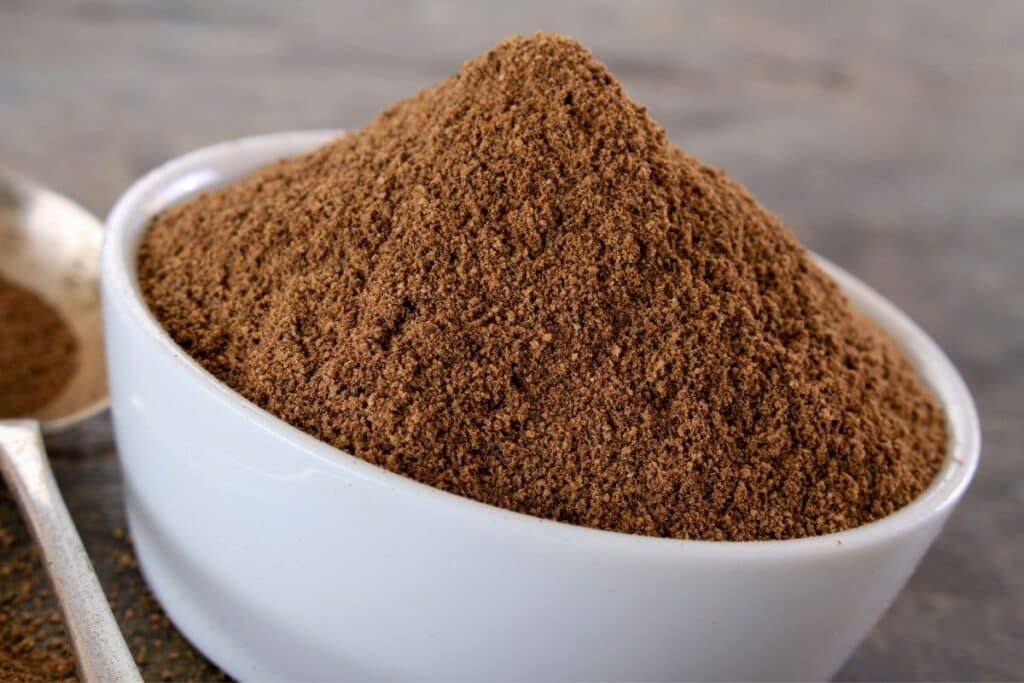
Garam Masala is a blend of Indian spices. Like curry powder, each “masala” has it’s own blend. Although turmeric isn’t typically included in this spice blend, garam masala still makes a decent substitute as it has a nice “spicy” flavor and can add some rich color to your dish. Since the spices in garam masala are usually roasted and include a variety of different spices, the flavor is much more robust than turmeric. Use sparingly when replacing garam masala for turmeric.
1 tsp turmeric = 1/4 to 1/2 tsp garam masala (it really depends on the specific blend you have)
9. Ground Cumin
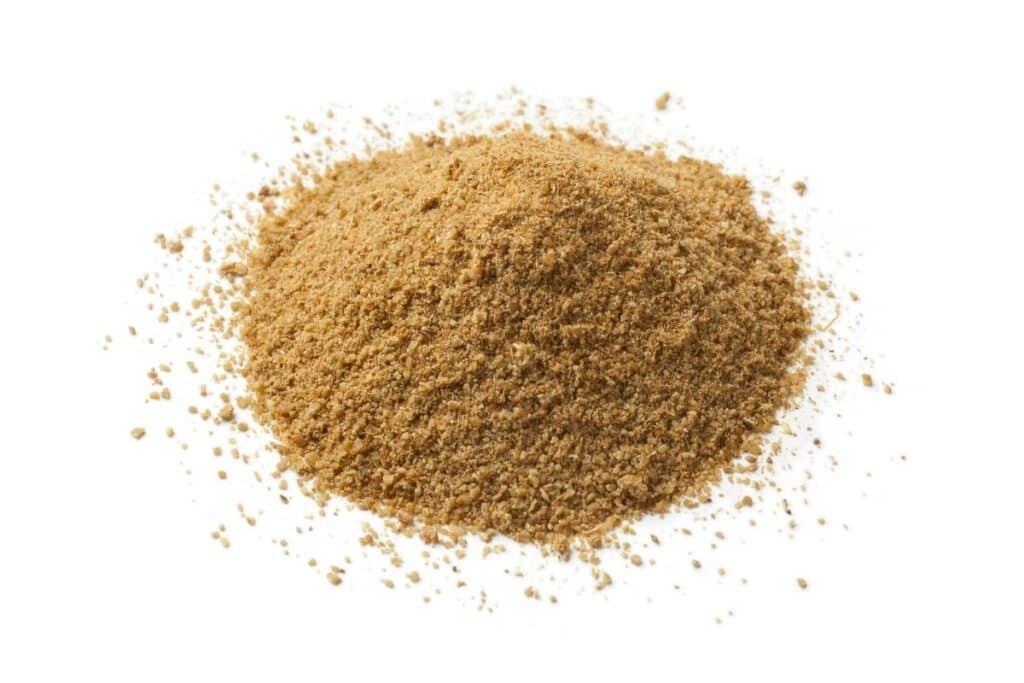
Cumin powder won’t give you the intense, vibrant color of turmeric, however it can work in a pinch! Cumin has an earthy, smokey flavor and can work as a substitute in soups, curries and in rice or veggie dishes. Since it has a more pronounced flavor, use less cumin than you would turmeric. As always, taste to ensure the right flavor for you palette.
1 tsp turmeric = 1/2 tsp cumin
10. Smoked Paprika + Mace
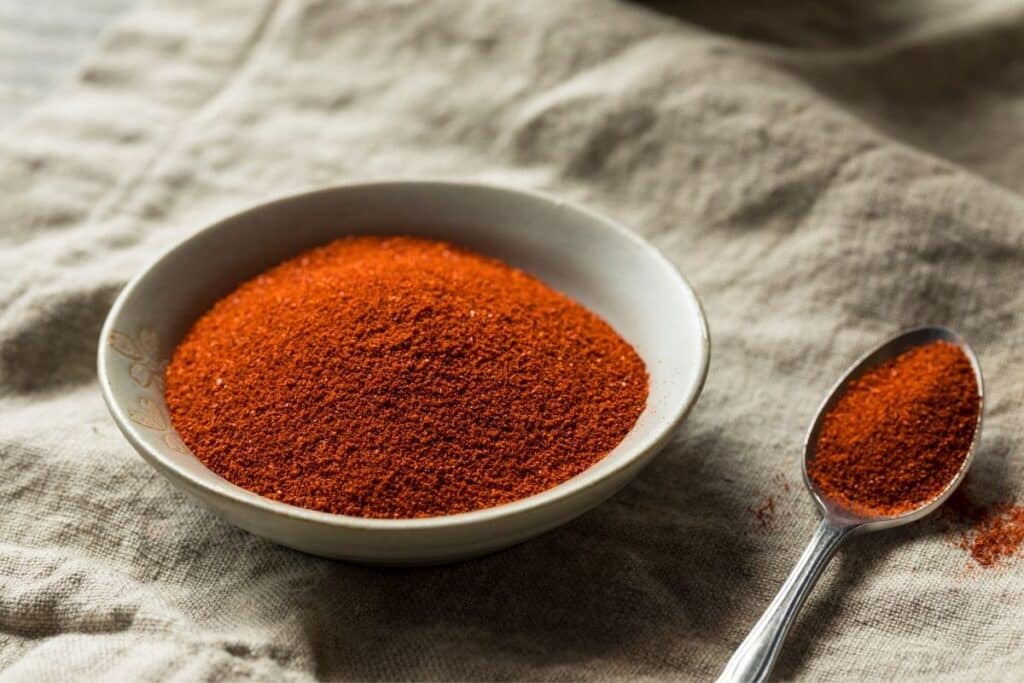
Mace, (no, not the kind you spray bad guys with!) is actually related to nutmeg. When it’s ground, it has a rich orange color very similar to turmeric. When combined with the subtle, smokey flavor of smoked paprika, it makes a very good substitute for turmeric — for both flavor and color! You can start using equal parts of mace and smoked paprika as a substitute for turmeric, but again, play around with the measurements until the flavor and color work for your preference.
1 tsp turmeric = 1/2 tsp smoked paprika + 1/2 mace (adjust to your preference)
11. Annatto
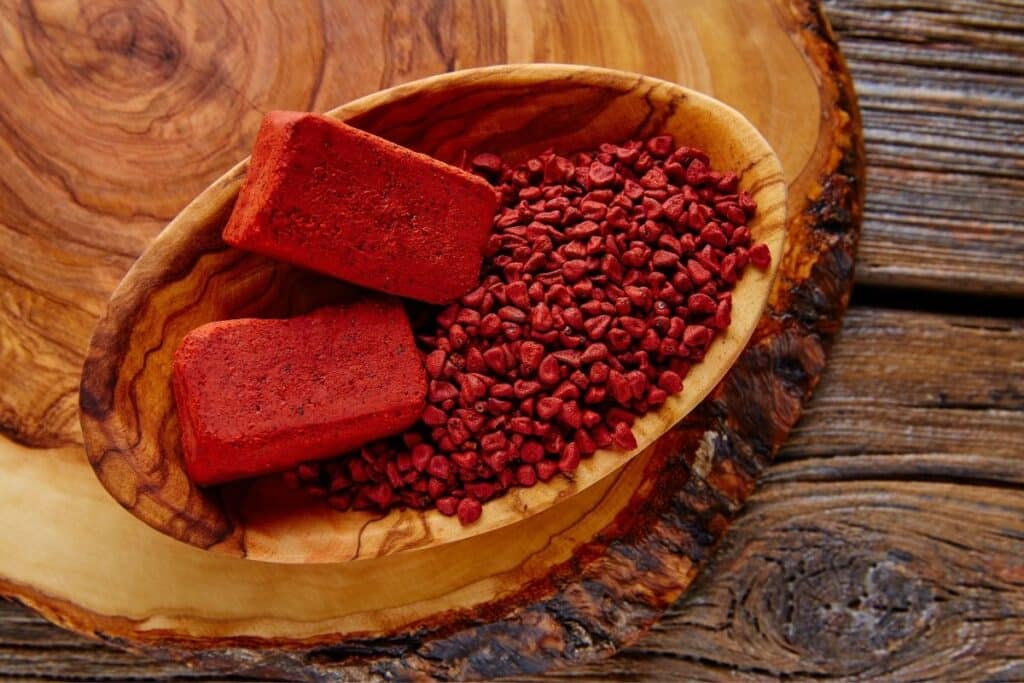
Annatto comes in both seed and powder form and works as a good sub for turmeric for color–the flavor is different, but it can still work in some recipes. The flavor of annatto is slightly peppery and nutty. When using the powder, use sparingly at first until you figure out if the taste is right for you. It doesn’t take much to get a rich color.
Don’t use WHOLE annatto seeds in recipes! If you have whole seeds, you’ll need to infuse them in oil first. 1 tsp annatto seeds to 2 tsp oil (1:2 ratio). Then use the oil to add to your dish.
1 tsp turmeric = 1/2 tsp annatto powder
12. Galangel Powder
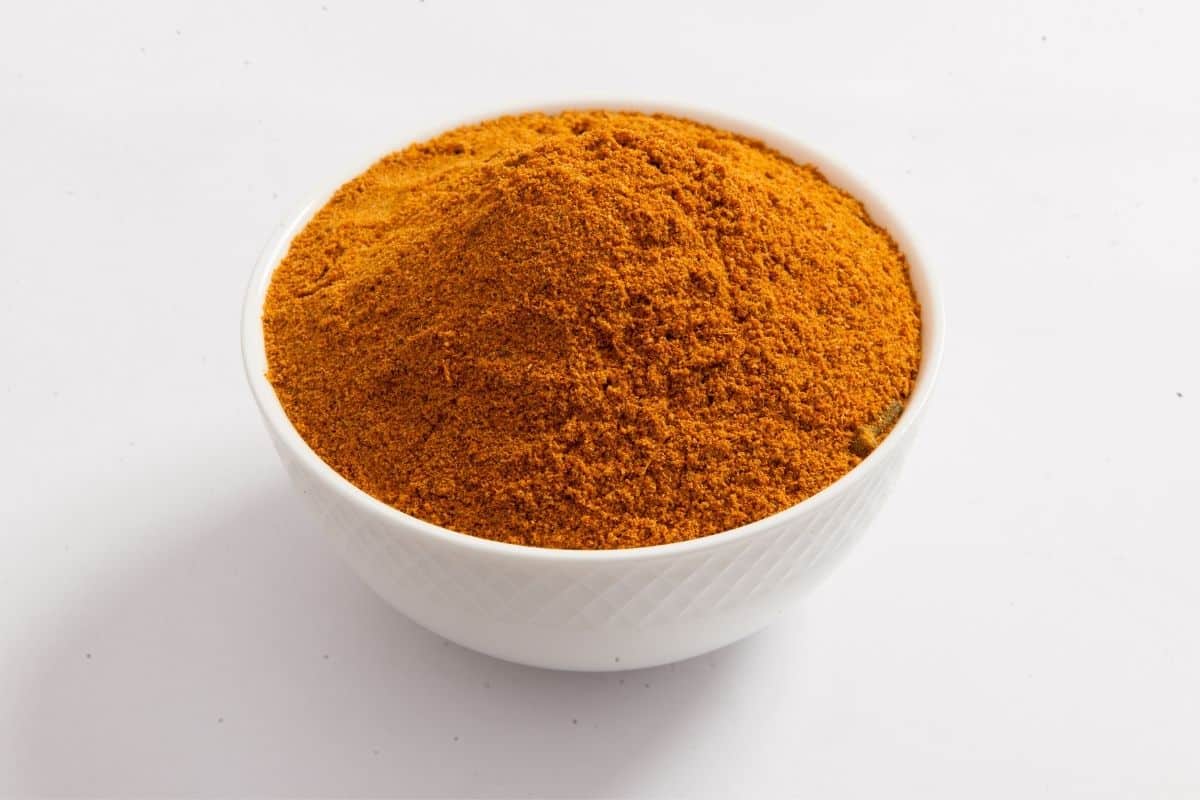
The taste of galangal powder can be described as woody, piney, spicy and peppery. It has a more much rich flavor profile than turmeric but still makes a good sub in curries, soups and many recipes if used sparingly!
1 tsp turmeric = 1/4 tsp (or less!) galangal powder
13. Sweet Paprika

Sweet paprika has a very mild flavor and a vibrant color, making it a great sub for turmeric! The health benefits of paprika are not nearly as beneficial as turmeric, so it’s not a great replacement in smoothies and tea but can work well in most recipes.
1 tsp turmeric = 1 tsp sweet paprika
14. Madras Curry Power
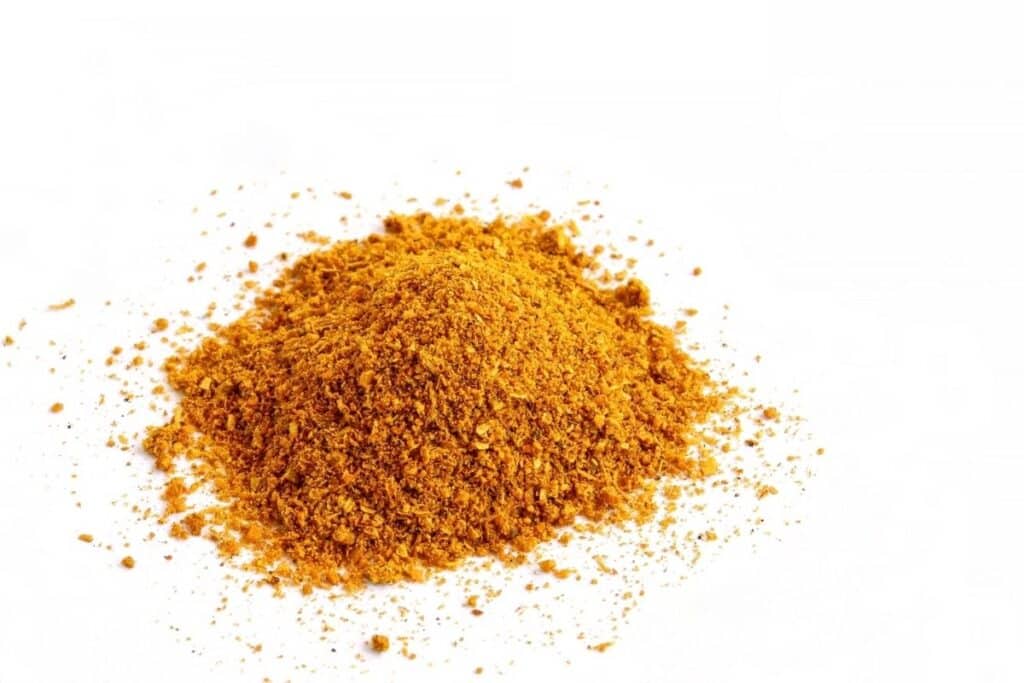
The main ingredient in Madras Curry Powder is turmeric, so it can make a great alternative. While regular curry powder has a deep orange color, madras curry powder has more of a yellow-reddish color. The red comes from cayenne pepper, which also bring more HEAT than regular curry powder. Keep this is mind, when substituting this for turmeric. Start with a little and slowly add.
1 tsp turmeric = 1/4 (or more) madras curry powder
15. Fresh Turmeric Root

I realize this might not be the easiest root to find at a large chain grocery store. HOWEVER, if you find yourself with fresh turmeric root (LUCKY) I want to make sure you know how to use it!
Fresh turmeric looks a lot like ginger root and is earthy tasting and slightly bitter. Like dried turmeric, it has a vibrant color. Fresh turmeric is best used grated into dishes (similar to ginger). It’s a great replacement when you want the potent health benefits of turmeric in smoothies and drinks.
1 tsp ground turmeric = 1 tbsp freshly ground turmeric
Turmeric roots can typically be found at Indian and Asian grocery stores, although every so often I will see it at a speciality grocery store like Whole Foods or Nugget.
HOW TO CHOOSE A SUBSTITUTE
Here are the best substitutes for turmeric in:
Soups/Stews/Curries
Here are the best replacements for turmeric in soups, stews and curries:
- Saffron, safflower, dry mustard, curry powder, turmeric paste, garam masala, cumin, smoked paprika + mace, galangal powder, annatto, sweet paprika, Madras curry powder
Vegetable & Rice Dishes
Try these replacements for turmeric in vegetable and rice dishes:
- Saffron, safflower, dry mustard, curry powder, turmeric paste, garam masala, cumin, smoked paprika + mace, galangal powder, annatto, sweet paprika, Madras curry powder
Smoothies/Juices
Here are some good alternatives to turmeric in smoothies and juices:
- Ground ginger, fresh turmeric root, turmeric paste
Tea: “Golden Milk”
Here are the best substitutes for turmeric in Golden Milk:
- Turmeric paste, ground ginger
Pickling
Try this replacement for turmeric when pickling:
- Mustard seeds, saffron, annatto, safflower
FREQUENTLY ASKED QUESTIONS
Yes, curry powder can make a good substitute for turmeric given that one of the main ingredients in curry powder is turmeric! Keep in mind that curry powder is a blend of many spices and can vary widely in taste, depending on the brand. Curry powder typically includes spices like coriander, cumin, ginger, pepper–in addition to turmeric. When replacing curry powder for turmeric, use sparingly at first until you can taste the dish and make sure the taste is to your liking.
Although limited studies have been done on the anti-inflammatory properties of spices, there are several spices that have been identified as having anti-inflammatory properties. In addition to turmeric, those spices are: ginger, cinnamon, garlic, cayenne, black pepper and cloves (Heathline).
Before taking any supplements or starting a new food routine, consult your doctor, especially if you are pregnant, nursing, have medical issues or are taking medication of any kind.
In a Dinner Rut?
Grab your 7-Day Meal Plan + 3 Bonus Recipes!

GREAT RECIPES WITH TURMERIC
Golden Milk

Turmeric Chicken Coconut Curry
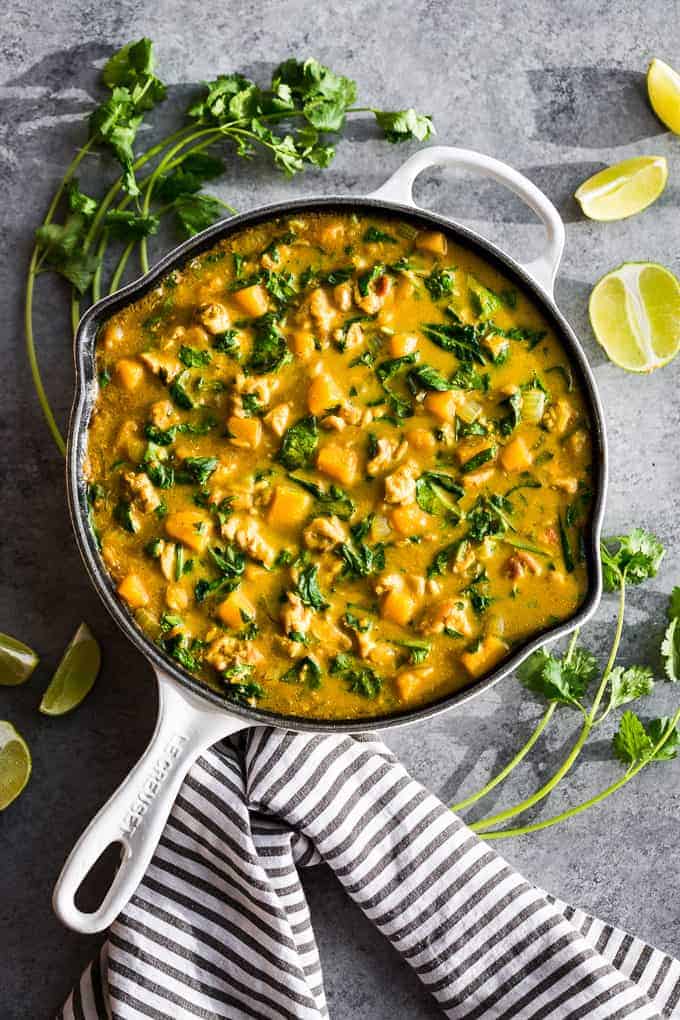
Creamy Turmeric Chicken Skillet


